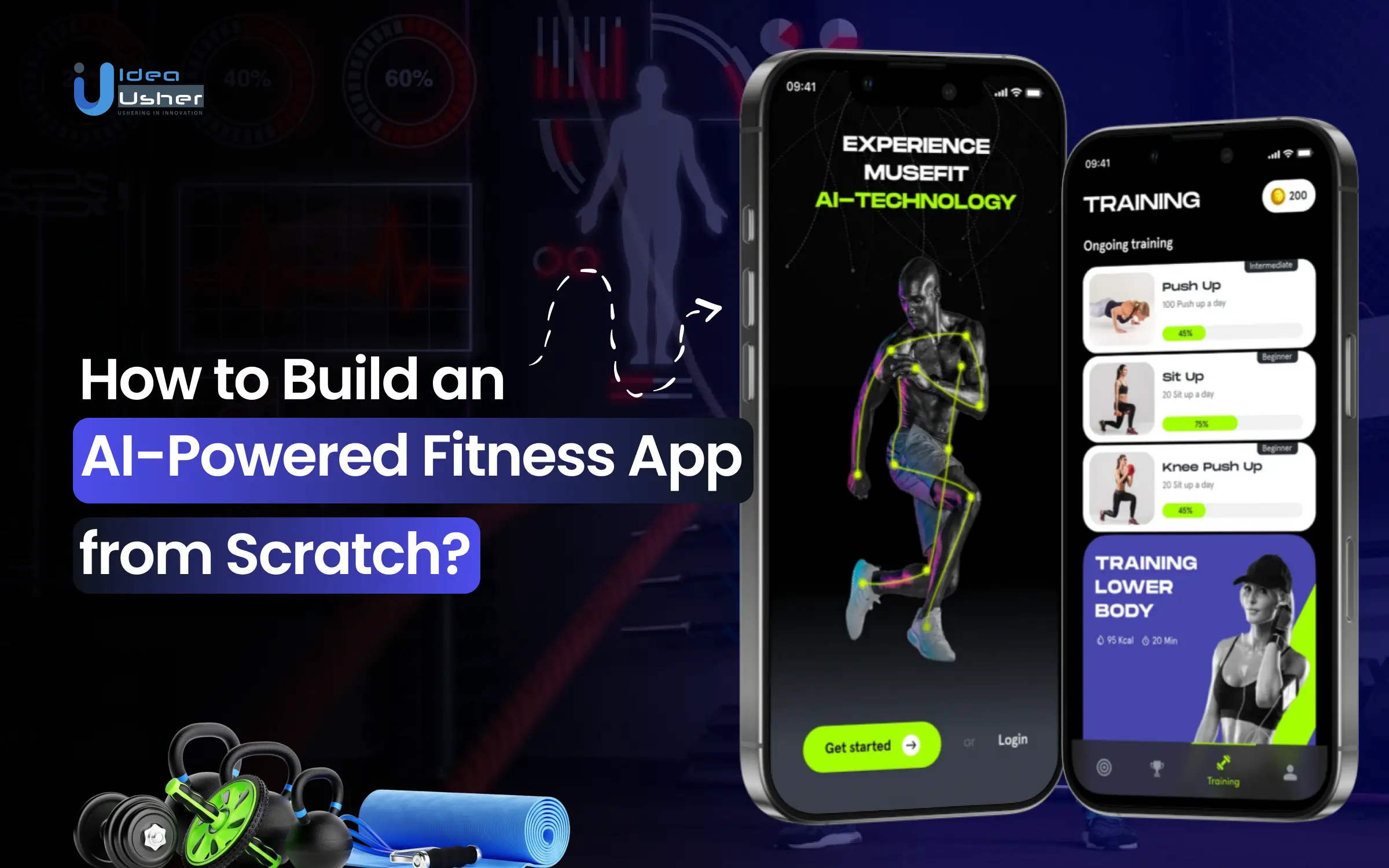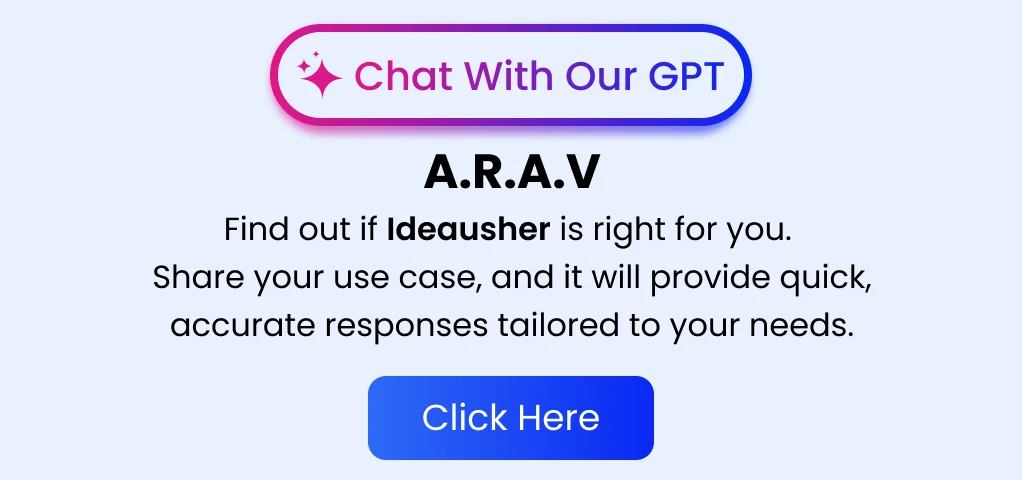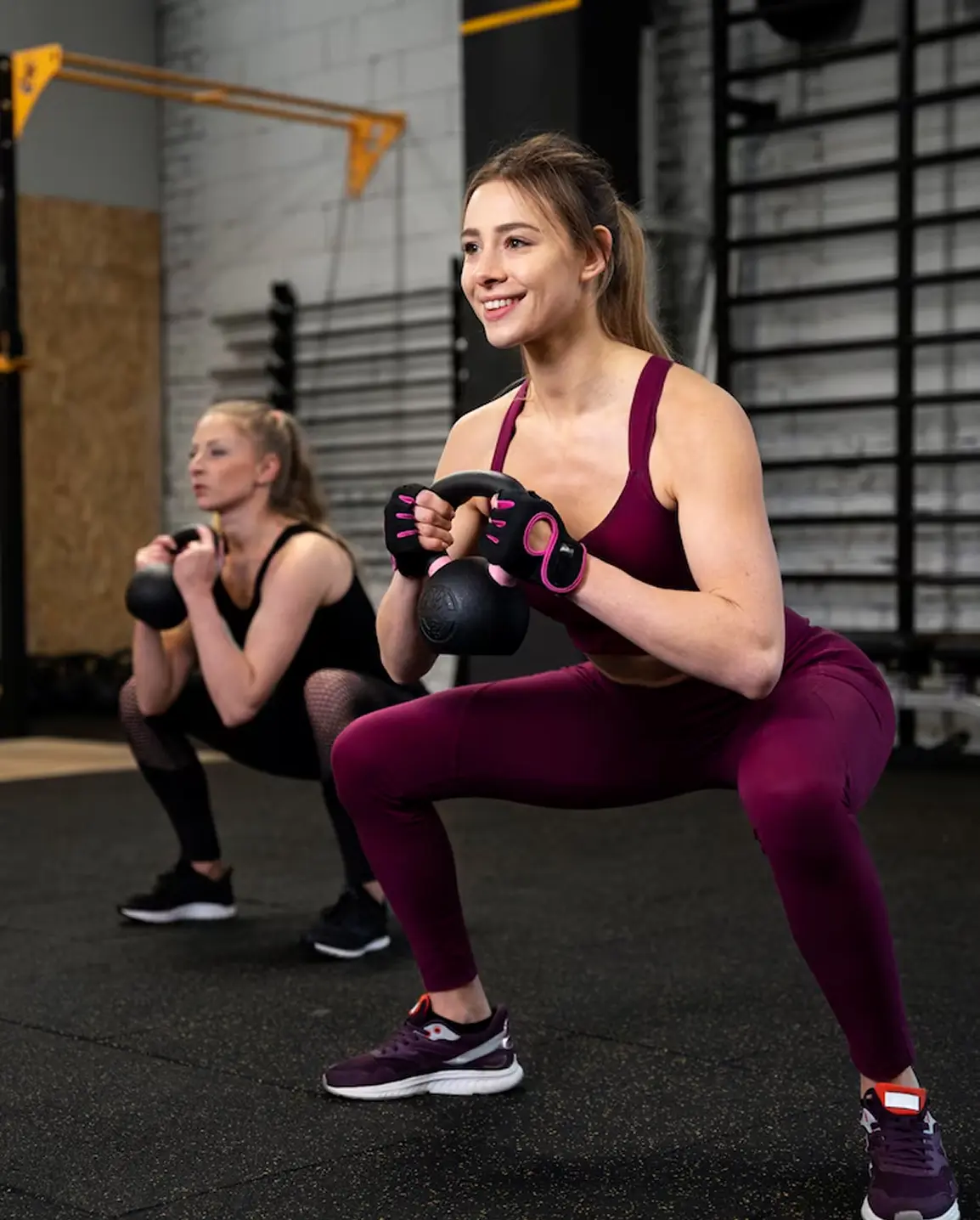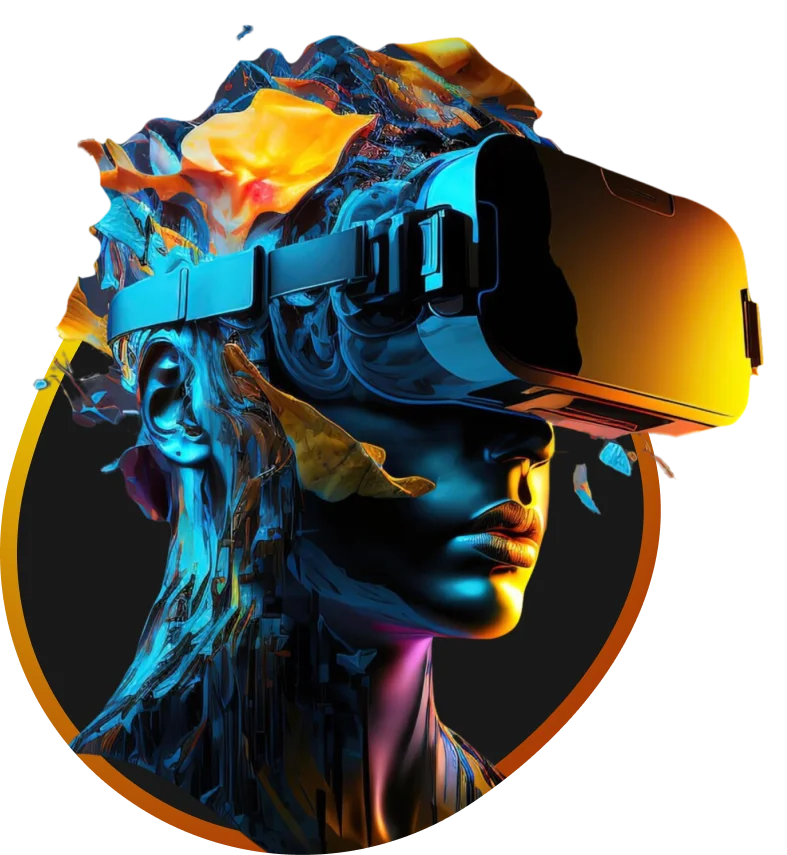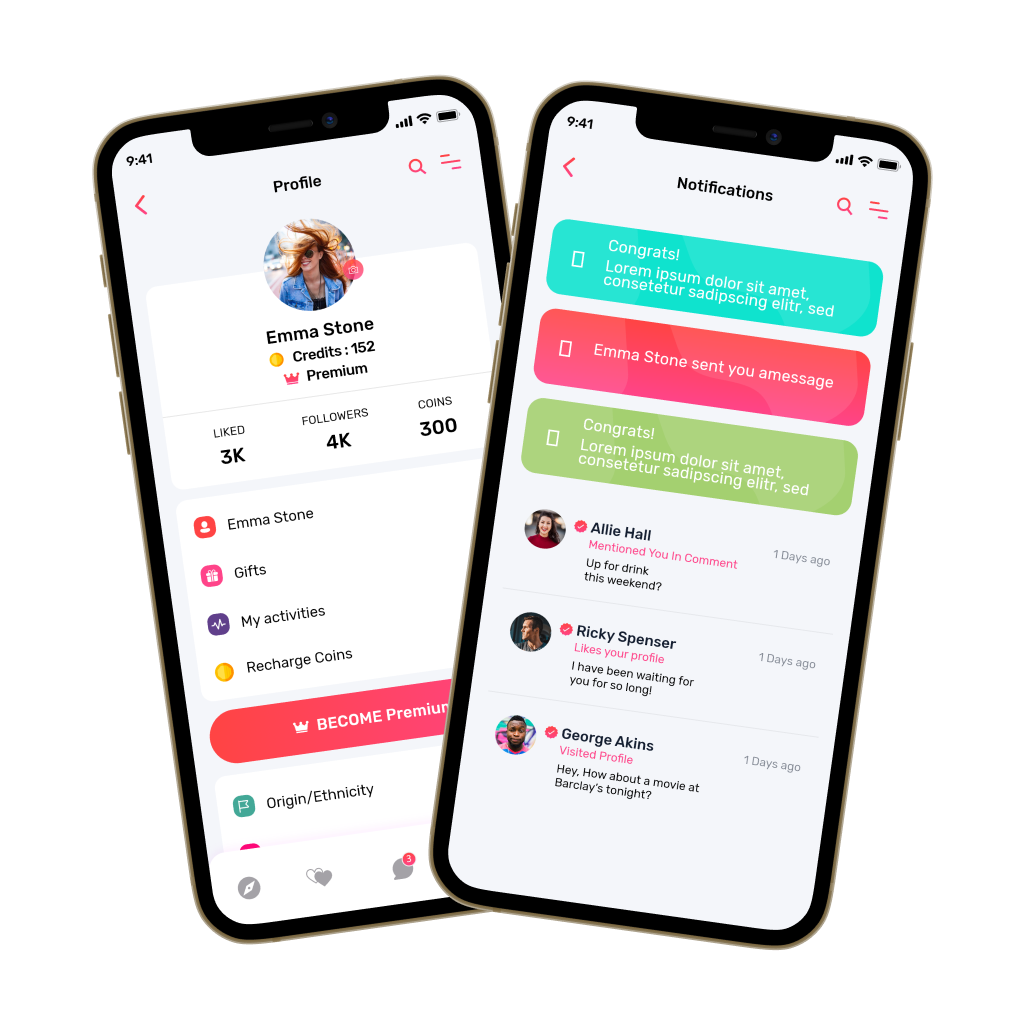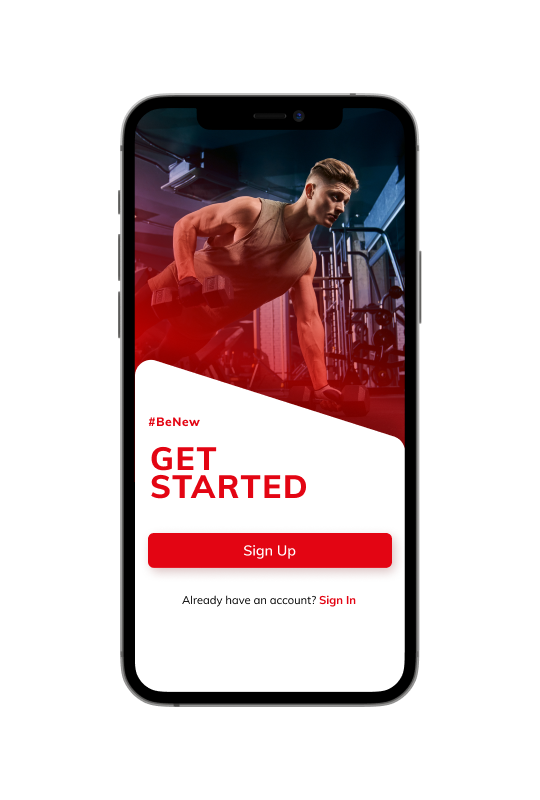For quite some time now, people have been increasingly turning to digital solutions for their health and fitness needs. The health and fitness industry is experiencing a significant digital transformation fueled by the rise of artificial intelligence. With over 74% of Americans using fitness apps and 60% replacing traditional gym memberships with digital options, there’s a clear demand for smart, flexible, and personalized fitness experiences. AI-powered fitness apps are at the forefront of this change, playing a crucial role in helping users achieve their health goals effectively and efficiently.
AI-powered fitness apps are meeting these expectations with features like real-time posture correction, adaptive workout plans, and intelligent nutrition guidance. These apps use computer vision, machine learning, and predictive analytics to offer personalized coaching. Fitness platforms that include AI-driven personalization see up to 50% higher retention rates, proving that tailored user experiences are key to long-term engagement.
In this blog, we will walk you through a step-by-step guide to AI fitness app development. You will also find a cost breakdown, must-have features, and the latest technology trends shaping the future of AI-powered fitness apps.
Why Build an AI-Powered Fitness App?
Artificial Intelligence is playing a pivotal role in redefining how users interact with digital fitness platforms by offering intelligent, personalized, and results-driven experiences.
Market Trends & Opportunities
As per Grand View Research, the global fitness app market, valued at USD 9.25 billion in 2023, is projected to grow at a CAGR of 14.08 percent from 2024 to 2030. This rapid expansion reflects a major shift toward digital-first wellness solutions. A growing base of health-conscious consumers, increased smartphone adoption, and rising expectations for smarter, on-demand fitness tools fuel this.
Key opportunities in the AI fitness app industry include:
- High user demand for real-time personalized workout and nutrition guidance
- Increased retention potential through adaptive content and AI-driven engagement
- Emerging interest in emotion-aware fitness experiences for mental and physical wellness
- Untapped markets in home-based, AI-powered virtual training for all age groups
- Rising preference for data-driven health insights integrated with wearables and health platforms
- Competitive advantage through predictive analytics for performance improvement and injury prevention
As the industry moves beyond static fitness solutions, AI-powered applications present a strategic opportunity for businesses to deliver intelligent, responsive, and scalable wellness experiences.
Key Benefits of AI in Fitness Apps
Artificial Intelligence significantly enhances the effectiveness and user experience of fitness applications by offering intelligent, personalized, and adaptable support tailored to individual needs.
1. Personalized Fitness Plans
AI-powered fitness applications are capable of generating customized workout routines by evaluating user-specific data such as fitness goals, current health status, and previous activity history. These plans evolve over time to reflect the user’s progress and changing requirements, ensuring sustained development and safety.
2. Real-Time Feedback
Through the use of computer vision and motion analysis, AI provides users with immediate feedback during exercise sessions. This enables real-time posture correction and technique improvement, thereby reducing the risk of injury and increasing the efficiency of each workout.
3. Flexible Workouts
AI facilitates adaptable workout scheduling by accommodating variables such as available time, equipment, and user preferences. This flexibility allows users to maintain consistency in their training, regardless of lifestyle or environment.
4. Data-Driven Insights
By continuously collecting and analyzing performance data, AI delivers comprehensive insights that help users monitor their progress, recognize patterns, and make informed adjustments to their routines. These insights contribute to more effective and results-oriented fitness journeys.
5. Motivation and Accountability
AI enhances user motivation through virtual coaching, milestone tracking, and personalized encouragement. These features support goal adherence and help sustain user commitment by fostering a sense of accountability and measurable achievement.
6. Accessibility
AI makes high-quality fitness guidance available to a broader audience by removing the need for physical trainers or in-person sessions. This level of accessibility empowers individuals from diverse backgrounds and circumstances to pursue their health and wellness goals independently and effectively.
Must-Have Features of an AI-powered Fitness App
To create a high-performing and user-centric AI-powered fitness application, it is essential to integrate a set of foundational features that drive value, personalization, and engagement. Below is a comprehensive breakdown of the core features every AI fitness app must include.
1. Personalized Workout Plans
Artificial intelligence enables the creation of tailored workout programs based on individual user profiles. By analyzing factors such as fitness level, personal goals, available equipment, age, weight, and previous activity patterns, the app can generate workout routines that are both relevant and effective. Over time, these plans evolve in response to user performance, ensuring continuous progress and preventing plateaus.
2. Real-Time Form Correction
Using advanced computer vision and pose estimation technologies, the app can analyze user movements through the device’s camera and provide immediate feedback. If a user’s form is incorrect or if a posture is likely to cause strain or injury, the system offers real-time guidance to correct it. This replicates the function of a professional personal trainer and adds significant value to the digital workout experience.
3. AI Health Coach
An AI-powered health coach functions as a virtual companion that guides users throughout their fitness journey. This feature provides motivational prompts, timely health tips, and personalized recommendations based on user activity. It can adjust plans according to daily conditions, offering flexible support that keeps users committed and informed.
4. Activity Recognition
With the help of motion sensors or camera input, the application can automatically identify the type of activity a user is performing, such as squats, push-ups, jumping jacks, or yoga poses. This eliminates the need for manual tracking and ensures that performance data remains accurate and comprehensive.
5. Progress Tracking and Analytics
Tracking progress is essential for motivation and goal setting. AI enables advanced analytics that display user performance across key metrics such as calories burned, number of reps, time spent, workout consistency, and areas of improvement. Visual progress reports and intelligent summaries help users stay informed and engaged.
6. Dietary Recommendations
AI-driven meal planning enhances the fitness experience by aligning nutrition with individual health goals. Based on user preferences, dietary restrictions, activity levels, and fitness objectives, the app can suggest daily or weekly meal plans. These plans are dynamic and adjust according to progress and feedback, creating a personalized and sustainable nutrition strategy.
7. Voice-Activated Assistance
Voice-controlled functionality allows users to interact with the app during workouts without needing to touch their devices. Whether starting a session, switching exercises, or requesting feedback, users can perform these actions using simple voice commands. This improves accessibility and streamlines the workout experience.
8. Adaptive Difficulty Levels
AI algorithms continuously monitor user performance and modify workout intensity accordingly. As users become stronger or more skilled, the app introduces more challenging routines. Conversely, if fatigue or difficulty is detected, intensity is reduced to maintain safe and effective training.
9. Integration with Wearable Devices
Connecting the app with fitness wearables such as smartwatches, fitness bands, or heart rate monitors provides a richer data ecosystem. Real-time metrics like heart rate, sleep quality, steps taken, and oxygen levels can be used to enhance personalization and health tracking.
10. AI-Powered Chatbots
AI chatbots offer round-the-clock assistance to users by answering queries, recommending workouts, explaining exercises, and even providing motivational messages. These bots improve user satisfaction, reduce support overhead, and ensure consistent engagement within the app.
Step-by-Step Guide to Develop an AI-powered Fitness App
Creating an AI fitness app involves merging technology, user-focused design, and industry knowledge to meet market needs. Here’s a concise guide for building a successful AI fitness app from concept to launch.
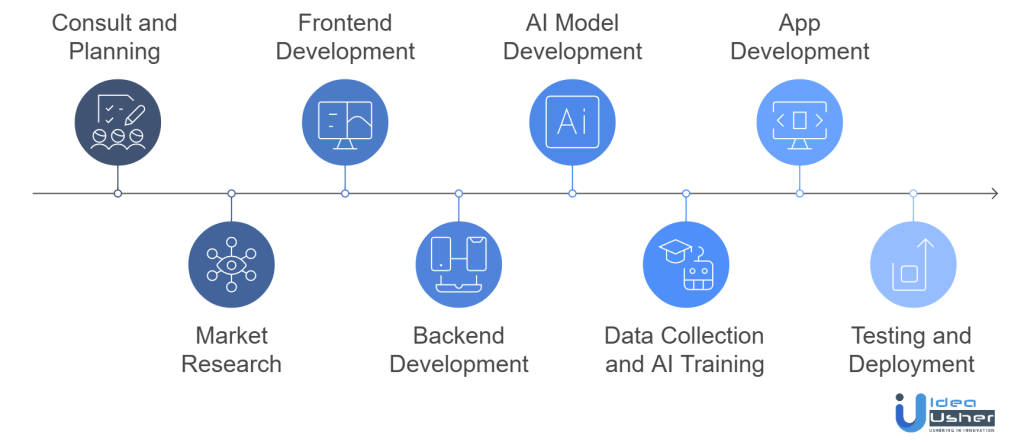
1. Consult and Planning
Consult with a reputable company like IdeaUsher, and their experienced developers and market researchers will guide you in finalizing the core purpose of your app. Whether it focuses on weight loss, muscle gain, or injury rehabilitation, your goals shape everything ahead. Identify your target audience, from beginners to athletes or physiotherapy users. Allocate a clear budget and timeline with resource milestones. Ensure compliance with GDPR or HIPAA if handling health data. Build a team of AI developers, backend engineers, and UX designers for well-rounded expertise.
2. Market Research
Conduct competitor analysis by studying top fitness apps such as Fitbod, Freeletics, MyFitnessPal, etc. Focus on their strengths and identify missing AI features like emotion detection or adaptive feedback. Run surveys or polls to validate user interest in your app’s unique proposition. Finally, define your monetization model clearly, whether it is freemium, subscription-based, in-app purchases, or sponsorships & advertisement.
3. Frontend Development
Choose your tech stack based on platform goals. React Native is ideal for cross-platform apps, while Swift (iOS) and Kotlin (Android) offer better performance for native builds. Prioritize a clean UI and intuitive UX, featuring personalized dashboards, animated exercise flows, and voice command support. Use tools like Figma or Adobe XD to design clickable prototypes for feedback and iteration. Ensure accessibility options are part of the design from day one.
4. Backend Development
Use scalable technologies like Node.js or Django to build a responsive backend. Store health data and user profiles using PostgreSQL for structure or Firebase for real-time updates. Key backend features should include:
- Payment integrations like Stripe or PayPal
- Wearable device support via Apple HealthKit and Fitbit API
- Cloud storage using AWS S3 for videos and user-generated content
Build clean, secure APIs for AI and frontend integration. Make sure APIs are well-documented and version-controlled to support seamless collaboration, future scalability, and easier maintenance across development teams.
5. AI Model Development
The AI layer transforms your app into a smart trainer. Use MediaPipe or TensorFlow.js for pose estimation, enabling real-time form correction. Build a recommendation engine using collaborative filtering to tailor workouts and meal plans. For conversational features, implement chatbots using GPT-4 or Dialogflow. To enhance personalization, consider emotion detection with APIs like Affectiva or train your own CNN models. Always optimize models with TensorFlow Lite for smooth mobile execution.
6. Data Collection and AI Training
Collect high-quality data to train your AI models. Use open-source datasets from Kaggle or gather user-submitted videos with consent. Label datasets accurately using tools like CVAT or Labelbox for exercises such as squats, push-ups, and yoga poses. Apply transfer learning with pre-trained models like MoveNet for quicker, more efficient training. Ensure diversity in datasets to reduce bias and optimize models for on-device performance to lower latency and battery consumption.
7. App Development and AI Integration
This phase involves stitching all modules together. Merge the frontend, backend, and AI layers using RESTful or GraphQL APIs. Optimize for real-time use cases with TensorFlow Lite or ONNX Runtime to run AI models locally. Conduct live testing with trainers to validate pose correction accuracy. Fine-tune performance by minimizing camera usage impact and battery drain. Integrate fallback logic for users with slower connections or low-end devices.
8. Testing and Deployment
Conduct extensive quality assurance testing for usability, app responsiveness, and AI accuracy. Use tools like Jest, Detox, or Appium for automated mobile testing. Perform load testing with tools such as BlazeMeter to ensure your backend can handle large user bases. Launch a beta version with feedback loops from fitness communities. For launch, focus on App Store Optimization with keywords like “AI fitness coach” and monitor performance with Firebase Crashlytics or Sentry.
Work with Ex-MAANG developers to build next-gen apps schedule your consultation now
Cost of Development
The cost of building an AI-powered fitness app depends on scope, feature complexity, and AI integration level. Below is a breakdown of estimated costs by development phase.
| Development Step | Task | Description | Estimated Cost |
| Consult and Planning | Project Scoping & Team Setup | Define goals, target audience, compliance and assemble an expert team | $1,500 – $5,000 |
| Market Research | Competitor & User Analysis | Analyze market gaps, validate features and define monetization | $1,000 – $4,000 |
| Frontend Development | UI/UX Design & App Interface | Design and build the app interface using React Native or native tools | $3,000 – $15,000 |
| Backend Development | Server, Database, Integrations | Develop backend architecture, APIs, and third-party integrations | $4,000 – $20,000 |
| AI Model Development | AI Feature Engineering | Pose estimation, chatbot, recommendation engine, emotion detection | $7,000 – $30,000 |
| Data & Training | Dataset Collection & AI Training | Source datasets, annotate, and train ML models with edge optimization | $2,500 – $10,000 |
| App Integration | Connect AI, Frontend & Backend | Seamlessly integrate all modules, test real-time AI features | $2,000 – $8,000 |
| Testing & Deployment | QA, Beta Testing, App Store Prep | Define goals, target audience, compliance, and assemble an expert team | $1,500 – $8,000 |
This is a rough estimated cost, but the actual budget may increase depending on the chosen tech stack, licensing for third-party APIs, cloud infrastructure, and complexity of AI model development or customization.
Latest Technology Trends in AI Fitness Apps
Artificial Intelligence is rapidly transforming fitness apps by making them more personalized, adaptive, and interactive. Anyone looking to build cutting-edge AI fitness platforms should consider integrating the following technologies to stay ahead in the market and meet evolving user expectations.
1. AI-powered Virtual Health Coaches
Integrating an AI-powered virtual coach helps users stay engaged with their fitness journey by offering continuous guidance, motivation, and real-time adjustments. These intelligent assistants personalize workouts, suggest rest periods, recommend nutrition changes, and check progress without the need for constant manual input. This leads to better user retention, improved performance outcomes, and a more human-like experience.
Example: Future is an emerging fitness app that connects users to real human coaches enhanced by AI. The app uses AI to tailor workouts based on progress and behavior while allowing real-time communication with the coach. This hybrid model helps scale personalization while keeping the human touch.
2. Predictive Analytics for Injury Prevention
By analyzing historical data and movement patterns, predictive analytics can identify potential injury risks before they occur. Apps that integrate this technology can suggest adjustments in intensity, form, or frequency of workouts, keeping users safe and active longer. It builds trust and makes the app suitable for all age groups and fitness levels.
Example: FitnessAI uses AI and predictive models to tailor strength training routines that minimize the risk of overtraining. It adjusts plans to balance muscle fatigue and recovery, helping users avoid injury while still progressing steadily.
3. Virtual Reality & Augmented Reality Workouts
VR and AR create immersive and interactive environments that gamify fitness routines. This technology can significantly enhance motivation and enjoyment, especially for users who find traditional workouts monotonous. Apps using VR/AR offer guided sessions in 3D environments, encouraging consistency and increasing retention.
Example: Supernatural is a rising VR fitness app that offers workouts in breathtaking virtual locations with curated music and real-time trainer guidance in activities like boxing, stretching, and aerobics. It combines fitness with entertainment, making workouts feel like immersive adventures rather than chores.
4. AI-Driven Mental Health Support
Modern fitness is holistic, and integrating AI mental health support allows your app to offer stress-relief techniques, emotional tracking, and mood-based recommendations alongside workouts. AI can analyze mood patterns through user inputs and biometric signals to suggest meditation, lighter routines, or motivational feedback. This creates a more comprehensive wellness platform.
Example: Earkick is a fast-growing AI mental health app that uses real-time biometric feedback and a conversational AI companion to monitor mental well-being. Offering real-time emotional support and journaling prompts helps users better manage stress, anxiety, and fitness-related motivation.
5. Adaptive Workout Difficulty
Adaptive training systems use real-time feedback and performance data to scale workout difficulty automatically. For users, this prevents under- or over-training. For app creators, it improves retention by reducing frustration for beginners and keeping advanced users challenged. It personalizes progress and encourages continued engagement.
Example: Fitbod applies machine learning to optimize strength training routines. As users complete exercises, the app adjusts sets, reps, and weights, keeping workouts fresh and effective. This has led to strong user satisfaction and consistent app usage.
6. AI-Enhanced Group Class Scheduling
AI-based scheduling analyzes user availability, time zones, interests, and previous attendance patterns to optimize class times and group formations. This feature helps maximize group engagement, improve class participation, and personalize scheduling without human intervention. Ideal for apps targeting remote fitness communities or wellness programs.
Example: Ladder offers group-based strength training programs led by coaches. It uses AI to match users with similar goals and optimal schedules, enhancing the sense of community and accountability within the app.
7. Health Data Integration and Analysis
Integrating wearable data and syncing with health platforms like Apple Health or Fitbit enables your app to offer deeper personalization. AI can analyze metrics like heart rate, sleep, step count, and recovery trends to recommend workout intensity, rest days, or nutrition changes. This comprehensive insight builds user trust and keeps your app relevant to their full lifestyle.
Example: Cal AI uses photo-based meal tracking alongside wearable integrations to give users a 360° view of their health. By analyzing visual and biometric data, the app offers detailed nutritional insights with minimal manual tracking.
8. AI-powered Nutritional Guidance
AI can process user preferences, allergies, dietary history, and goals to offer automated, evolving meal plans. This eliminates guesswork for users, helping them stay on track nutritionally. When paired with workout routines, it completes the full health ecosystem and increases long-term app stickiness.
Example: Simple is a fast-growing AI-based nutrition and fitness app that uses smart food tracking, photo-based logging, and personalized coaching to help users lose weight. It continuously adapts plans based on user input and delivers actionable, daily guidance.
Conclusion
Building an AI-powered fitness app needs a strategic blend of technology and user-focused design. Features like personalized workouts, real-time form correction, AI nutrition guidance, and mental wellness support enhance user engagement. Incorporating wearables, predictive analytics, and emotion-aware coaching keeps the app relevant in a competitive market.
As the demand for smarter, more adaptive fitness solutions continues to rise, entrepreneurs and businesses have a unique opportunity to lead the next wave of digital wellness. With the right development roadmap, a clear understanding of market needs, and a focus on innovation, your AI fitness app can stand out while delivering real value to users and establishing long-term success in the fitness industry.
Build an AI-powered Fitness App from scratch with IdeaUsher!
Our team of expert engineers specializes in AI, machine learning, and mobile app development to create advanced AI-powered fitness applications. IdeaUsher is a leader in developing intelligent workout solutions, leveraging state-of-the-art computer vision, deep learning models, and real-time data processing to deliver personalized and engaging fitness experiences.
With experienced ex-MAANG/FAANG engineers, we integrate cutting-edge features such as AI-driven workout recommendations, real-time form correction, and seamless API integrations with wearables and fitness platforms like Apple Health and Google Fit. Our solutions are built for precision, scalability, and user-friendliness, enabling businesses to capitalize on the booming AI-driven fitness market.
Partner with IdeaUsher to develop an innovative AI-powered fitness app that revolutionizes workout tracking, enhances user engagement, and drives long-term fitness success.
Work with Ex-MAANG developers to build next-gen apps schedule your consultation now
FAQs
1. How does AI personalize workout plans?
AI personalizes workout plans by analyzing individual user data such as fitness levels, health metrics, goals, and workout preferences. Algorithms assess performance history, real-time biometric data, and progress trends to dynamically adjust exercises, intensity, and duration, ensuring optimal effectiveness tailored specifically to each user’s evolving needs.
2. How do AI workout apps provide real-time feedback?
AI workout apps deliver real-time feedback through technologies such as computer vision, motion tracking, and wearable integrations. These tools analyze the user’s movements, posture, and biometrics instantly during workouts, providing immediate corrective guidance on form, technique, pace, and intensity to improve performance and reduce injury risks.
3. What are the challenges in developing AI workout apps?
Key challenges include ensuring accurate data collection, designing responsive and adaptable AI algorithms, maintaining real-time performance, and protecting user privacy. Additionally, sustaining user engagement requires continuous personalization and intuitive design.
4. What are the future trends in AI workout apps?
Future trends include deeper integration with wearables, predictive injury prevention, emotion-aware workouts, immersive AR/VR experiences, and hyper-personalized coaching driven by real-time analytics and long-term user behavior.
